June 17, 2024 by Heather
The Importance Of Temperature Colours In Bladesmithing
In the world of bladesmithing, the accurate assessment of steel temperature is crucial. Unlike other fields where digital readouts and modern instrumentation can provide precise measurements, a bladesmith must rely on the colour of the heated steel to gauge its temperature. While seemingly less scientific, this traditional method is deeply rooted in the craft and remains effective for forging processes.
As an Amazon Associate I earn from qualifying purchases.
List of Knife-Related Suppliers in South Africa.
Why Colour Matters
In a bladesmith’s forge, the focus is on the steel’s temperature, not the forge itself. Therefore, while available, fancy gadgets like laser thermometers often prove to be more of a hindrance than a help during forging. The colours of the steel at various temperatures provide an approximate yet reliable indication of its heat, allowing the smith to adjust their technique accordingly.
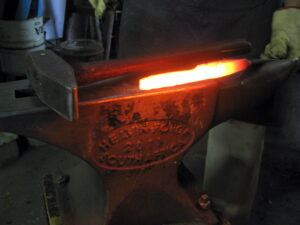
The Limitation of Descriptive Terms
Describing these temperature colours can be quite challenging. Common terms like “sunset yellow,” “lemon yellow,” and “cherry red” are frequently used, but they can be misleading due to the wide range of colours these terms might represent. For instance, cherries can range from black to pale pink, making “cherry red” a particularly vague descriptor.
Standardizing Colour Descriptions
To avoid confusion, using standardized colour descriptions as outlined in a temperature colour chart is more accurate. Here’s a simplified version of such a chart:
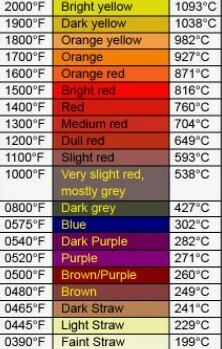
Ambient Light Considerations
It’s important to remember that the colour seen is highly dependent on ambient lighting conditions. The same piece of steel can appear differently if forged outdoors compared to indoors. Therefore, maintaining consistent workshop lighting is essential for accurate temperature assessment.
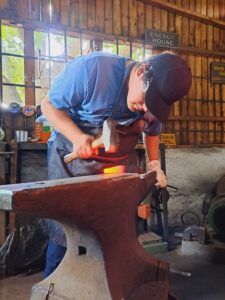
Heat Treatment and Instrumentation
While forging relies heavily on colour observation, heat treatment can benefit significantly from modern instrumentation. Accurate temperature control during heat treatment is crucial for achieving the desired hardness and durability of the blade. If you have access to advanced tools and instruments, such as digital thermometers or pyrometers, using them during heat treatment can enhance the precision of your work. This is especially important when working with stainless steel, which requires exact temperatures for optimal results. However, a skilled smith using traditional methods for carbon steel can still achieve excellent results with a gas forge, magnet and experience.
Low temperatures used for thermal cycling and tempering blades as well as for testing the temperature of your pre-warmed quenching oil, can be done with a “candy thermometer” https://amzn.to/4cL5B5W
Candy thermometers should also be used in your tempering oven to check that the temperature you set it at is actually correct. Many ovens differ greatly so having a second read out can mean the difference between a hard or soft blade.
Higher temperatures are more difficult to read out and require industrial thermal thermometers that allow you to read the temperature from a safe distance. These can be used when making damascus steel (though not essential once experienced) and for checking hardening temperatures for stainless knife steel. This is the one we recommend https://amzn.to/3XOGL13 We use this thermometer when making pizzas in the pizza oven that Kevin made!
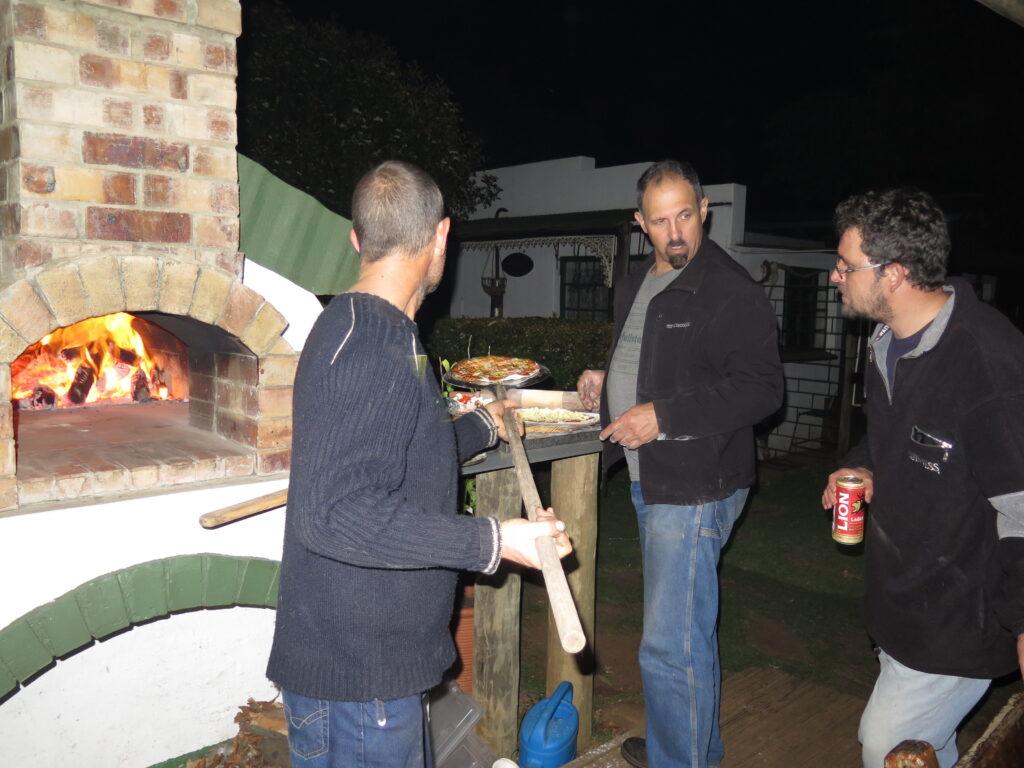
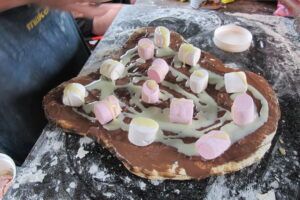
Conclusion
The art of bladesmithing is steeped in tradition, with temperature colours playing a vital role in the forging process. Understanding and correctly interpreting these colors can make a significant difference in the quality of the blade. While modern tools have their place, especially in heat treatment, the skill of judging temperature by colour remains a fundamental aspect of the craft. Keep your lighting consistent, trust your eyes, and let the steel guide you through its hues and temperatures.



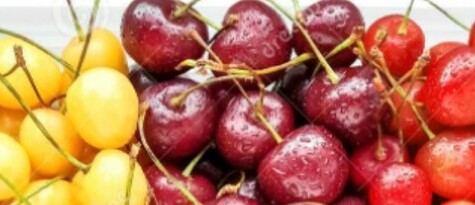
Leave a Reply